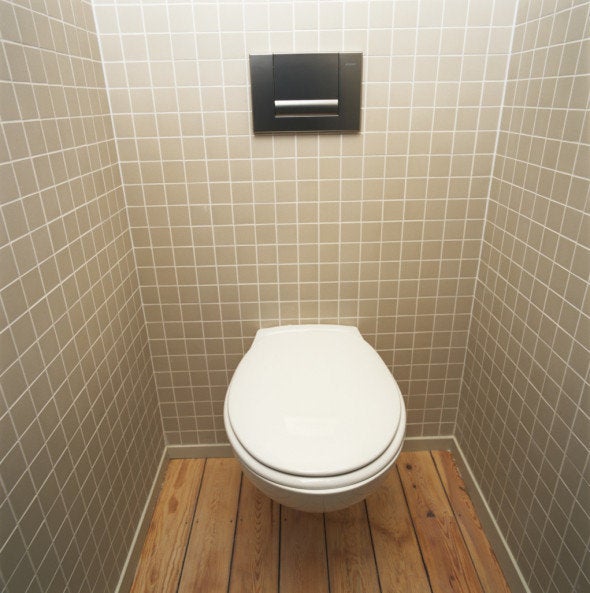
The San Francisco's Department of Public Works reports 600 to 800 "incidents of human waste and urine" on city streets every month.
Mostly centered in the alleyways of SoMa and the Tenderloin, the city's poop problem is an issue. Not just a nightmare for pedestrians who have to tip-toe though the proverbial minefield and the sainted souls of SF Clean City tasked with tidying it up, it's also a symptom of a larger problem—insufficient bathroom facilities for the sizable homeless population congregating in those neighborhoods.
Hyphae Design Laboratory has come up with an innovative solution to the problem: Enter the "pooplet." The Oakland-based firm, which also designed the "living roof" now sitting atop the California Academy of Sciences, has proposed installing eco-friendly compost toilets that, much like San Francisco's now ubiquitous "parklets," take up the space previously occupied by a parking spot.
The enclosed toilets would automatically separate liquid and solid waste, which cuts down on the smell factor and makes the final product more efficient to turn into reusable compost. The walls of the pooplets would be translucent, allowing police to monitor the blurry silhouettes of the action inside in an effort to stop illegal activities from happening inside.
The Bay Citizen reports:
The cost would be $40,000 to $50,000 each. Hyphae, together with the...[North of Market-Tenderloin Community Benefit District], is financing the prototype restroom. If successful, [Hyphae founder Brent] Bucknum said he hoped the city would pay for others, perhaps to provide relief to the crowds expected for the 2013 America’s Cup yacht races. The restrooms are intended to be free.
A recent San Francisco Chronicle editorial pinned the blame for the feces problem on the homeless organizations in the area not providing enough bathrooms for the communities they serve:
And yet, with all the service organizations in the neighborhood - offering everything from counseling to drug treatment, housing advocacy and free meals - almost none of them provide a supervised public toilet.
That's ridiculous. The large organizations, like St. Anthony's and Glide Memorial Church, serve thousands of hearty meals every day and then send their clients out into the neighborhood with virtually no place to use the restroom. No wonder there are feces and urine on their streets.
An investigation by SF Public Press absolved the groups of some responsibility, saying they were doing what they could, but serious problems stood in the way of giving the homeless population enough bathroom access to keep them from defecating on the street:
The problem is that they don’t stay open at night, and are closed during evenings and very early in the morning when the homeless need those most.
"If I want to go to a job interview, I have to go first thing in the morning, and when does Glide start serving? 8:30 or 9,” said Jim Rokas, an out-of-work contractor who sells the Street Sheet in front of City Hall. "Really, the only way to find a restroom before 7 a.m. is to buy yourself a cup of coffee at Starbucks,” something he and others in his situation are often forced to do—spending what little money they have just to relieve themselves.
That said, the area isn't completely bereft of public toilets. In 1994, the city signed a 20-year contract with Paris-based JCDecaux to install and maintain dozens of the coin-operated, advertising supported public restrooms throughout the city.
While the toilets are operated at no cost to the city, they're numerically insufficient to meet public need and, as was documented on the A&E show Intervention, have become hotbeds for drug use.
The first pooplet could drop into a lucky San Francisco parking space by next spring.
